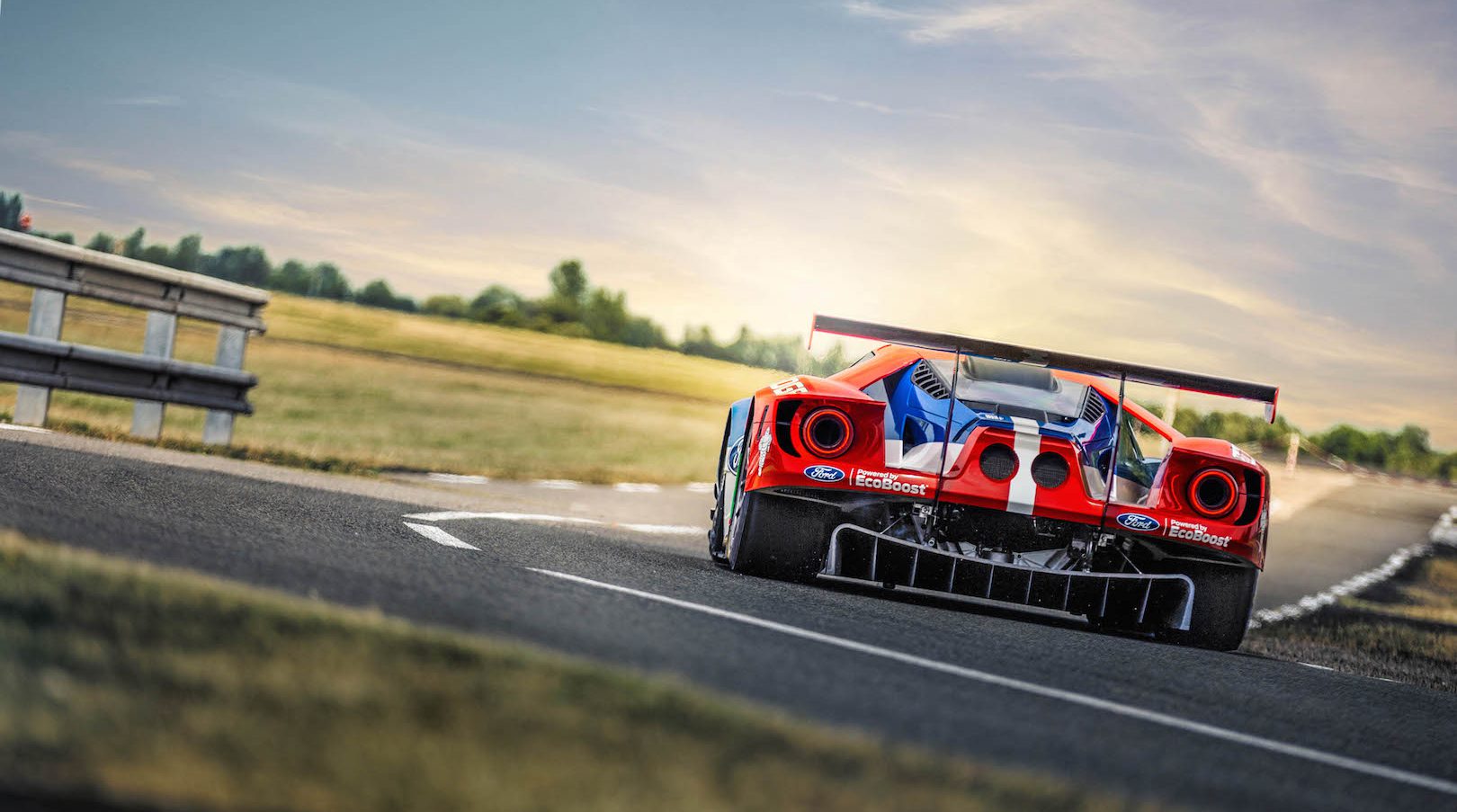

Ford’s taken so long to deliver performance specs on the new Ford GT, you’d think they wrote a dramatic pause into the GT’s engineering brief. But they’re here now: With an SAE-rated 647 hp and 550 lb-ft of torque, the twin-turbocharged Ecoboost V6, which Ford developed as part of its Daytona Prototype racing program, will underpin Ford’s fastest production vehicle ever. Ford says the new GT will hit 216 mph.
And speaking of torque, those turbines will help deliver 90 percent of the 3.5-liter V6’s peak starting at 3,500 rpm. Click, click, BOOM. Indeed.
In a press release that unexpectedly introduced the automotive world to an obscure racetrack in Ontario, Canada, Ford announced the GT had beaten two competitors — the McLaren 675LT and Ferrari 458 Speciale — in identical conditions and with the same driver, around Calabogie Motorsports Park. Calabogie (which we will now say non stop for the rest of the day. CALABOGIE!), is a 3.14-mile race circuit about 2.5 hours from the NY border, and home of the Canadian Superbike Championship. Jokes aside, the track is four hours from the Multimatic Technical Centre, the Canadian motorsport engineering shop managing the assembly of both the roadgoing Ford GT and its racing counterparts.
On this heretofore under-known Calabogie circuit (CALABOGIE!), the Ford GT set a lap time of 2.09.8, beating the McLaren 675LT (2:10.88) and Ferrari 458 Speciale (2:12.9).
Look out, Nürburgring, there’s a new benchmark in town.
The production Ford GT, which reportedly started rolling out of Multimatic’s assembly plant in December at the rate of one per day, has a carbon-fiber architecture, active suspension and aerodynamics, and lightweight glass created by Corning’s Gorilla Glass. Ford says the car’s dry weight will be under 3,000 pounds.
Watch the racing version of the Ford GT hit the track this weekend at the 24 Hours of Daytona (Rolex 24).